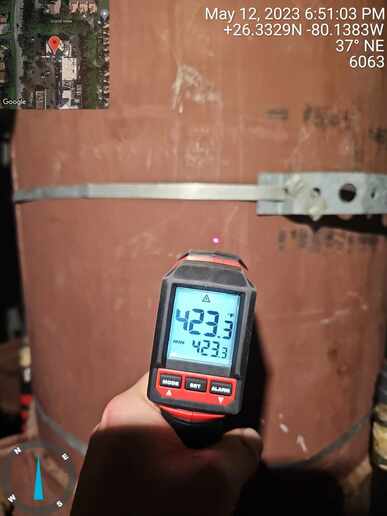jon f mn
Well-known Member
I've done some hard work in high Temps in my day, baling hay is one. But yesterday my son sent me this pic. He does cel phone tower work and is working in Florida. This job is inside a clock tower. He told the company it was too hot to work in there and they needed to pay for a portable air conditioner unit. They said he was just being fussy. The pipe is the structure the entenas fasten to. It's all inside a tin roof on the clock tower.

Since the sun isn't shining on that pipe I'm guessing the air temp would have to be 600 deg to get that pipe that hot. There is nothing in the pipe, so it's not heated from inside. He said he couldn't even breath in there.
He left and told them he will come back when they approve the extra for cooling.

Since the sun isn't shining on that pipe I'm guessing the air temp would have to be 600 deg to get that pipe that hot. There is nothing in the pipe, so it's not heated from inside. He said he couldn't even breath in there.
He left and told them he will come back when they approve the extra for cooling.

